By BSc Hons Sid Atkinson and BSc Hons Austin flood

During a fight camp, athletes dramatically increase frequency, duration and intensity of their technical training. As Strength and Conditioning coaches we have to manipulate our programming to accommodate this to ensure fatigue is managed effectively and that the athlete ‘peaks’ for the fight. This requires the consideration of a wide array of factors such as monitoring and testing, appropriate volume/intensity manipulation and conducting a thorough needs analysis of the athlete before the start of the fight camp. Important to note is that this work is complemented over time by educating the athlete on how to take care of their own bodies.
When conducting a needs analysis we consider the requirements of the sport, strengths and weaknesses of the athlete and opposition and how the phases of training leading to the fight will ensure peaking. However, a vital factor that must not be overlooked is injury prevention and management. Due to the extreme nature of MMA, many of the athletes have long term injuries which require our consideration to reduce the risk of re-injury and ultimately improve performance. All of the physical qualities that we have identified for improvement in our needs analysis than have to be tested in a way that is practical and easy to repeat. For example, neuromuscular control of glutes in relation to reducing knee valgus and be tested with a series of jumping and landing patterns. Following the identification of appropriate tests, specific exercises will be implemented to improve said qualities. Some exercises will be used to improve a very general quality (e.g. back squat for lower body strength) and other will be used to improve a quality that is very specific to the athlete (e.g. high volume leg press for an athlete with an ACL deficient knee).
Each exercise then has to have appropriate progressions and regressions that still train the same quality. Before exercises progressions are applied pre-determined criteria must be met. An example of this would be before we allow an athlete to deadlift they must be able to move through a full range of hip flexion with no spinal deformation during a Romanian deadlift (RDL). In contrast to this, there are times when an athlete has to be brought back a step or two in order to train the same quality whilst minimising injury risk. This can often happen in a fight camp as a result of the enormous fatigue they are subjected to. Important to consider at this point is the mental aspect that this may have on the fighter during their fight camp. To minimise this, planned de-load weeks during the entirety of the fight camp are crucial. Before any programming is done, we talk to the fighters about the training schedule with regards to intensity, duration and level of fatigue. This allows us not only to have a structure for our training week but also how to vary specific sessions throughout the fight camp.
The fight camp itself is completed in phases; each phase has a specific focus. This is known as periodization. When there is no fight on the horizon training is much more general.
Any previously determined weaknesses are worked on consistently; this underpins any phase of training but further away from a fight is a good opportunity to iron out any deficiencies. As well as weak points our fighters will also focus on strength training, heavy load and low volume is the key here. This allows for maximal strength to be increased, the fact is that stronger fighters can hit harder and grapple more effectively. Also as weight cuts are a long way off, it is possible to get the calories required to recover from these heavy sessions without worrying too much about gaining weight. The low rep nature of the sessions does ensure that there isn’t too much muscle bulk piled on.
As a camp gets closer fitness training will increase. Our guys maintain a good level of fitness throughout the year, before a fight camp we ensure they have a high level of aerobic fitness. This includes longer sessions on the bike, often hooked up to a heart monitor so we can observe exactly what level they are training at. As we move into the camp the fitness sessions will change to short bouts of high intensity with scheduled rest periods; incorporating full body movements, not just cardio equipment. This more accurately represents the demands of a fight Again we keep an eye on heart rates, in this stage we expect them to be working close to their max.
The weights sessions change significantly during a fight camp. As we work to peak power the strength training reduces to a ‘maintenance’ level. That is just enough to keep it, but the main focus is power and as the fight becomes closer the overall weight being used reduces. Any deficiencies are still considered, especially during the warm up. The warm-ups are often specifically catered to individual issues as they are repeated daily. Our focus during the main sessions switches to become much more sports specific. This is important because as the phase is relatively short, we keep it very specific and include much more than just endless med ball throws. Power training is essentially the most force one can produce in the shortest amount of time. And we work with whole body compound movements to ensure a proper transfer of force through the body. We utilise jumps, hops, Olympic weightlifting, band resistance, kettle bells and many other training tools. Week by week we expect faster and faster movements until our fighters are peaked and primed ready to fight.
The final point we shall discuss when completing a fight camp its fatigue management. MMA is a multi-disciplinary sport so we often have to schedule gym sessions around technical drills, boxing, wrestling and jiu-jitsu, with enough time to recover. Not only this but often our fighters are in the process of cutting; recovery is even harder with a reduced calorie intake. There are only so many hours in the week so we carefully discuss with each fighter what their week consists of and at what time. We then plan everything around this, advising days to eat more, days to rest, how to utilise supplements such as protein, creatine and bcaas and when the big sessions should be. Together with a meticulously structured program, we are able to ensure the best performance physically possible on fight night.
About The Authors
Sid and Austin are coaches from Strength and Conditioning gym The Athletic Edge

Sid Atkinson BSc
Completed his Undergraduate degree in Strength and Conditioning Science at St Marys University and currently doing a Masters in Sports Rehab, Sid competes in Powerlifting and has previously played competitive level rugby as well. A coach with a keen eye for detail and sound rationale, Sid has expertise in coaching a wide range of athletes and people who want to achieve diverse fitness goals.

Austin Flood BSc
Currently doing a Masters in Sports Rehab having completed his degree in Strength and Conditioning, Austin has coached a multitude of athletes over the past few years. In 2012 he studied in America working with Division 1 Collegiate Football at Lehigh University. Austin assisted coaching with Wales women’s lacrosse in the run up to the 2013 World Cup and has worked with London Irish for the 2013/14 season as part of the prestigious gold medal intern program through St Mary’s. Austin competes in Weightlifting. Having worked with a variety of athletes, Austin has developed a versatile coaching style which enables him to train lots of different groups of people.

During a fight camp, athletes dramatically increase frequency, duration and intensity of their technical training. As Strength and Conditioning coaches we have to manipulate our programming to accommodate this to ensure fatigue is managed effectively and that the athlete ‘peaks’ for the fight. This requires the consideration of a wide array of factors such as monitoring and testing, appropriate volume/intensity manipulation and conducting a thorough needs analysis of the athlete before the start of the fight camp. Important to note is that this work is complemented over time by educating the athlete on how to take care of their own bodies.
When conducting a needs analysis we consider the requirements of the sport, strengths and weaknesses of the athlete and opposition and how the phases of training leading to the fight will ensure peaking. However, a vital factor that must not be overlooked is injury prevention and management. Due to the extreme nature of MMA, many of the athletes have long term injuries which require our consideration to reduce the risk of re-injury and ultimately improve performance. All of the physical qualities that we have identified for improvement in our needs analysis than have to be tested in a way that is practical and easy to repeat. For example, neuromuscular control of glutes in relation to reducing knee valgus and be tested with a series of jumping and landing patterns. Following the identification of appropriate tests, specific exercises will be implemented to improve said qualities. Some exercises will be used to improve a very general quality (e.g. back squat for lower body strength) and other will be used to improve a quality that is very specific to the athlete (e.g. high volume leg press for an athlete with an ACL deficient knee).
Each exercise then has to have appropriate progressions and regressions that still train the same quality. Before exercises progressions are applied pre-determined criteria must be met. An example of this would be before we allow an athlete to deadlift they must be able to move through a full range of hip flexion with no spinal deformation during a Romanian deadlift (RDL). In contrast to this, there are times when an athlete has to be brought back a step or two in order to train the same quality whilst minimising injury risk. This can often happen in a fight camp as a result of the enormous fatigue they are subjected to. Important to consider at this point is the mental aspect that this may have on the fighter during their fight camp. To minimise this, planned de-load weeks during the entirety of the fight camp are crucial. Before any programming is done, we talk to the fighters about the training schedule with regards to intensity, duration and level of fatigue. This allows us not only to have a structure for our training week but also how to vary specific sessions throughout the fight camp.
The fight camp itself is completed in phases; each phase has a specific focus. This is known as periodization. When there is no fight on the horizon training is much more general.
Any previously determined weaknesses are worked on consistently; this underpins any phase of training but further away from a fight is a good opportunity to iron out any deficiencies. As well as weak points our fighters will also focus on strength training, heavy load and low volume is the key here. This allows for maximal strength to be increased, the fact is that stronger fighters can hit harder and grapple more effectively. Also as weight cuts are a long way off, it is possible to get the calories required to recover from these heavy sessions without worrying too much about gaining weight. The low rep nature of the sessions does ensure that there isn’t too much muscle bulk piled on.
As a camp gets closer fitness training will increase. Our guys maintain a good level of fitness throughout the year, before a fight camp we ensure they have a high level of aerobic fitness. This includes longer sessions on the bike, often hooked up to a heart monitor so we can observe exactly what level they are training at. As we move into the camp the fitness sessions will change to short bouts of high intensity with scheduled rest periods; incorporating full body movements, not just cardio equipment. This more accurately represents the demands of a fight Again we keep an eye on heart rates, in this stage we expect them to be working close to their max.
The weights sessions change significantly during a fight camp. As we work to peak power the strength training reduces to a ‘maintenance’ level. That is just enough to keep it, but the main focus is power and as the fight becomes closer the overall weight being used reduces. Any deficiencies are still considered, especially during the warm up. The warm-ups are often specifically catered to individual issues as they are repeated daily. Our focus during the main sessions switches to become much more sports specific. This is important because as the phase is relatively short, we keep it very specific and include much more than just endless med ball throws. Power training is essentially the most force one can produce in the shortest amount of time. And we work with whole body compound movements to ensure a proper transfer of force through the body. We utilise jumps, hops, Olympic weightlifting, band resistance, kettle bells and many other training tools. Week by week we expect faster and faster movements until our fighters are peaked and primed ready to fight.
The final point we shall discuss when completing a fight camp its fatigue management. MMA is a multi-disciplinary sport so we often have to schedule gym sessions around technical drills, boxing, wrestling and jiu-jitsu, with enough time to recover. Not only this but often our fighters are in the process of cutting; recovery is even harder with a reduced calorie intake. There are only so many hours in the week so we carefully discuss with each fighter what their week consists of and at what time. We then plan everything around this, advising days to eat more, days to rest, how to utilise supplements such as protein, creatine and bcaas and when the big sessions should be. Together with a meticulously structured program, we are able to ensure the best performance physically possible on fight night.
About The Authors
Sid and Austin are coaches from Strength and Conditioning gym The Athletic Edge

Sid Atkinson BSc
Completed his Undergraduate degree in Strength and Conditioning Science at St Marys University and currently doing a Masters in Sports Rehab, Sid competes in Powerlifting and has previously played competitive level rugby as well. A coach with a keen eye for detail and sound rationale, Sid has expertise in coaching a wide range of athletes and people who want to achieve diverse fitness goals.

Austin Flood BSc
Currently doing a Masters in Sports Rehab having completed his degree in Strength and Conditioning, Austin has coached a multitude of athletes over the past few years. In 2012 he studied in America working with Division 1 Collegiate Football at Lehigh University. Austin assisted coaching with Wales women’s lacrosse in the run up to the 2013 World Cup and has worked with London Irish for the 2013/14 season as part of the prestigious gold medal intern program through St Mary’s. Austin competes in Weightlifting. Having worked with a variety of athletes, Austin has developed a versatile coaching style which enables him to train lots of different groups of people.





